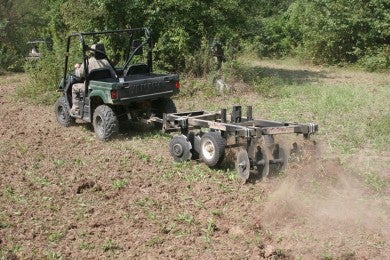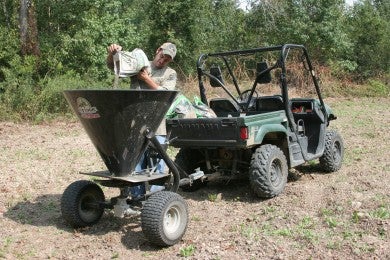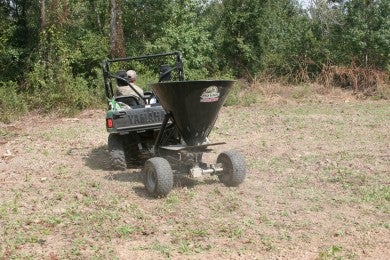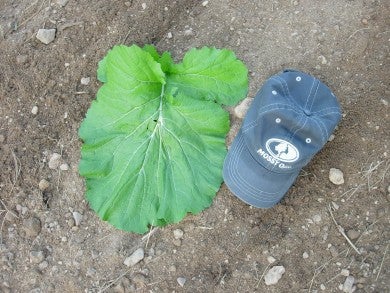Food Plots for Bigger Bucks
Bob McNally 05.19.15
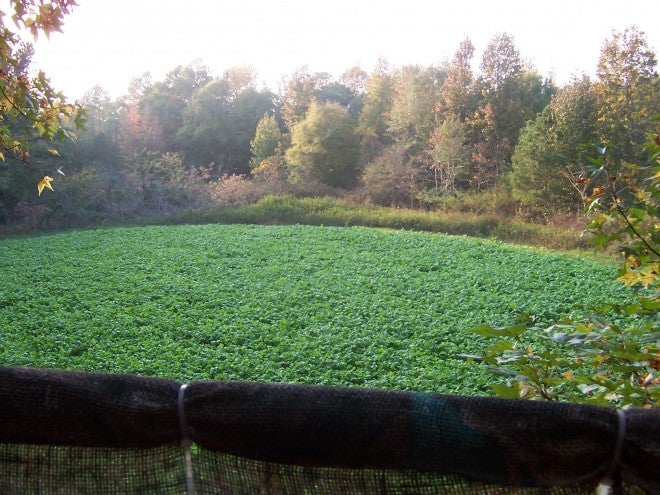
If your deer hunting property doesn’t have food plots for wild game, you’re missing out on the best and most economical way to improve your whitetail hunting, according to Dr. Grant Woods, one of America’s pre-eminent whitetail biologists.
“Done correctly, with proper liming, fertilizing, seed planting, and weed control, I can produce 5,000 to 10,000 pounds of digestible deer forage per food plot acre per year–at a cost of about $400 per acre,” explains Woods, a Missouri native and nationally known deer and land management specialist. “The average hardwoods acre grows 50 to 500 pounds of natural deer forage annually, including choice acorns from oaks.
“Thus a well-managed food plot will provide deer and other game 10 to 200 times more forage than wild woods can. Man can grow more quality deer food in a one-acre plot than 50 acres of hardwoods can naturally produce. And a food plot does it consistently, year after year, whereas Mother Nature’s hardwoods are fickle.”
Grant explains that timberland can have years with fair to poor wildlife forage production, depending on rain, weather, and other factors. But man-made, managed wildlife food plots provide deer with nutritional forage almost year-round, depending on their geographic location. While native hardwoods typically have many lean months where forage production is virtually nonexistent.
He makes the case for food plots by citing a 2,000-acre hunt property that had poor-quality deer that he helped manage. One year seven different food plots totaling 13 acres were planted. The results were astounding, as deer body weights on the property increased by a remarkable 14 percent.
Some hunters complain that while they “manage” for better deer and bigger bucks on their small hunt properties, neighboring landowners don’t. The rub is why should a hunter with food plots and the desire to have better bucks “grow” deer only to have a neighbor shoot the animals if they wander next door?
“That can be a problem,” Woods states. “But if you have choice food plots on your 100 acres, deer will spend the majority of their time on and near those fields–not on your neighbor’s property. This is advantageous for attracting and holding better bucks and also in keeping smaller animals on your land where you’ll allow them to grow, instead of wandering over the property line where they could be shot.”
Quality deer management is more than just feeding deer during hunting season, explains Woods. Deer need a high-quality food source 12 months per year, something in the neighborhood of 16 to 20 percent protein. This is what’s required to significantly increase deer body weight and antler development.
Before getting into the food plot business, it’s smart to carefully analyze potential sites on hunt property, Woods advises. If possible, pick a spot that’s close to a deer bedding area, like a swamp or creek bottom. Make sure prominent wind direction is favorable for hunting, regarding the routes deer should use between bedding areas and the plot. Consider, too, where stands or shooting houses will be located to “cover” plots, and the paths hunters use to access stands. Ideally, wind will be in a hunter’s face on stand, and his path to a stand will not be crossed by deer coming to the plot.
It’s important to pick a spot for creating a food plot that’s conducive to growing plants. A potential food plot site should receive direct sunlight through at least 50 percent of the day. Not enough sunlight reaching a food plot is one of the biggest reasons for crop failure on small hunting sites.
In determining whether to have summer or winter food plots, or both, remember that maximum summer nutrition is what grows antlers, and healthy fawns from rich doe milk produces prime whitetail herds. Winter food plots maintain quality animals, too, but more importantly, draws them into the open where they’re vulnerable to hunters.
The edges of clear-cuts by timber companies are ideal for planting “green strips.” Even better are power and gas pipelines. Old, wide logging roads and fire breaks also can be used for planting. Timber lanes and firebreaks, however, can have too much tree canopy that reduces sunlight and limits potential for lush, maximum-producing, whitetail-drawing plants. Also, woods roads usually have very acidic soil from decaying plant matter, so require additional liming and fertilizing.
Once a location, size, and configuration of a deer food plot has been determined, the on-site dirt work begins.
First step is to get a soil sample of the site, which is something few hunters want to do, but is without question the surest, quickest, least expensive, and painless way to produce a top-quality food plot. The soil should be analyzed by a county farm agent, soil conservation agency, or large feed store. They’ll recommend how much lime and the proper mix of fertilizers should be placed on the plot and can advise what plants to sow.
Proper plot preparation is extremely important, with vigorous disking, plowing, and tilling to ready the soil.
Careful, correct site preparation also makes for the best weed control on plots. A plot should be tilled and disked several times over several weeks, before seeding. And it shouldn’t be tilled more than three inches deep.
Timing a planting when rain is slated for the area is important to give seedlings a jumpstart. Plant seeds during a drought or a deluge, and you can kiss the whole food plot operation good-bye.
If all this field work sounds a little too involved or too laborious, stop and think how hard you hunt for good bucks now. Moreover, a lot of food plot drudgery is only during the initial stages of establishing plots and carving them out of the woods.
Soil samples, disking, seeding, etc. can be tough work. But for thousands of sportsmen it’s a labor of love–something they do in the off-season to put bucks in their sights during hunting season.
